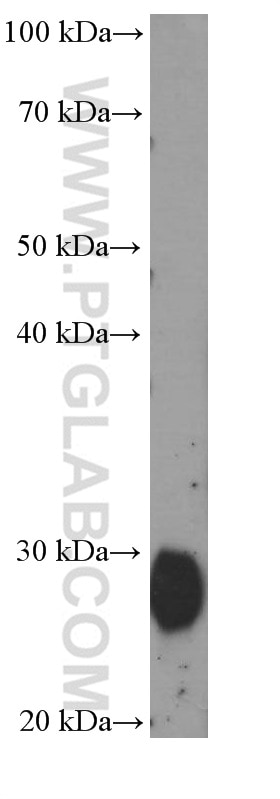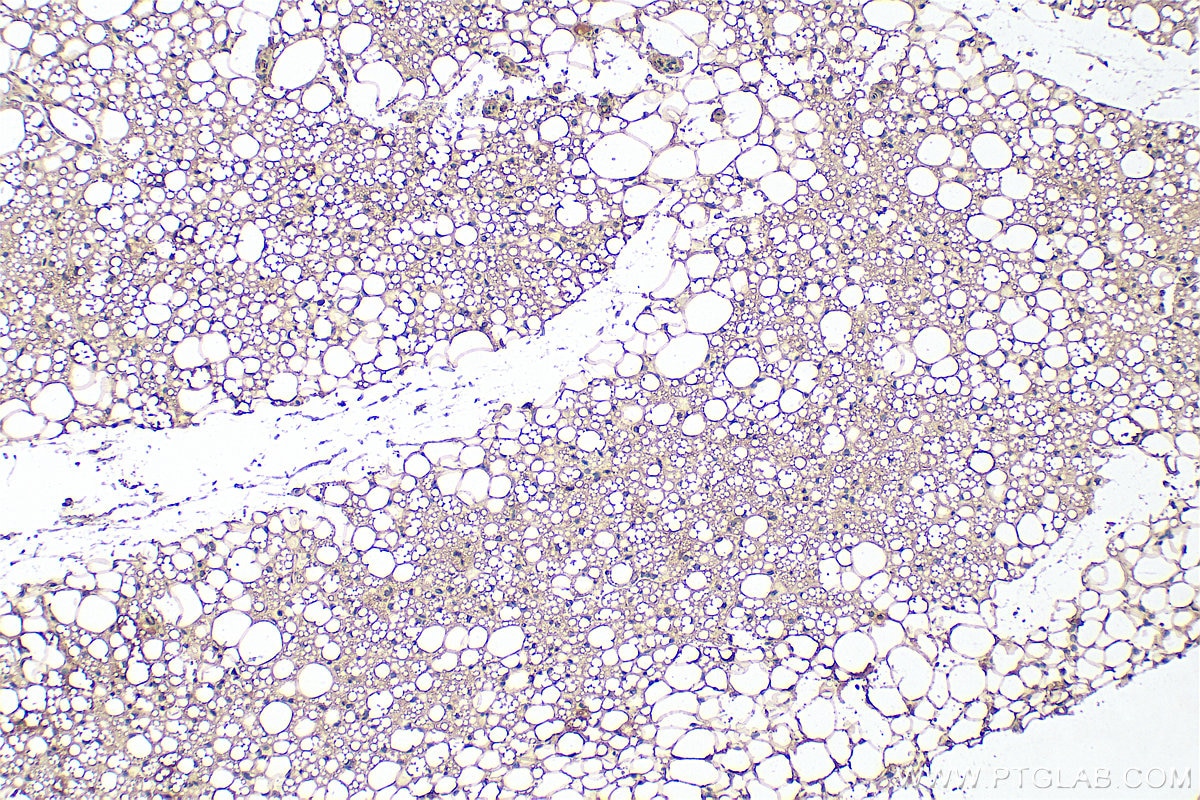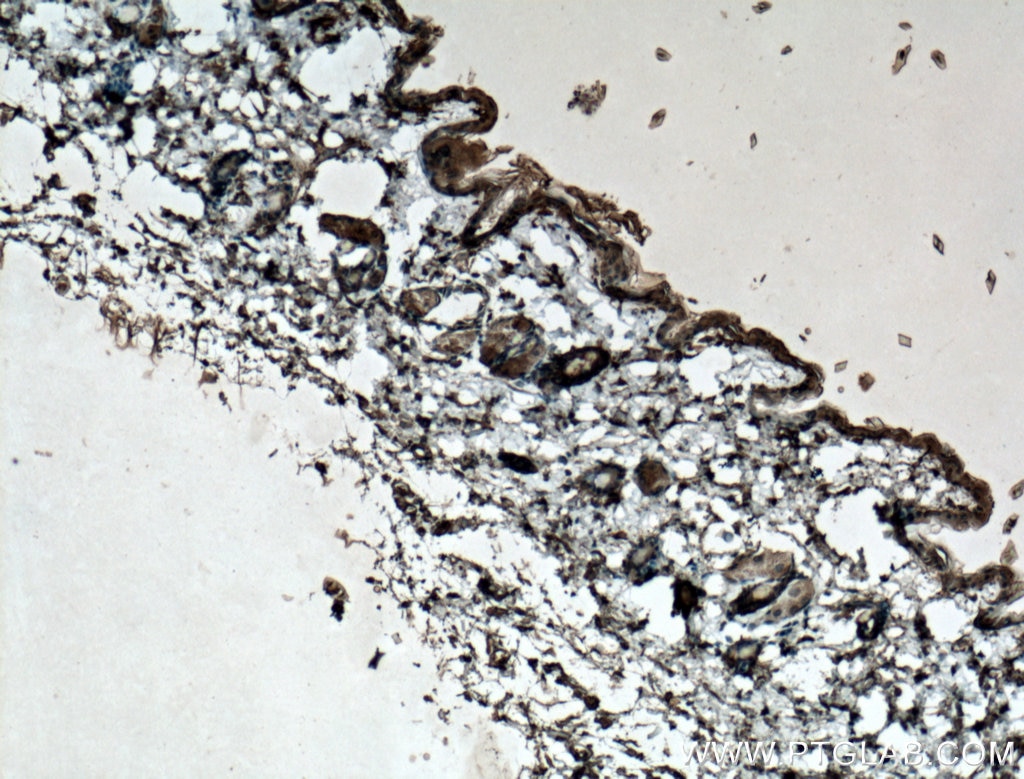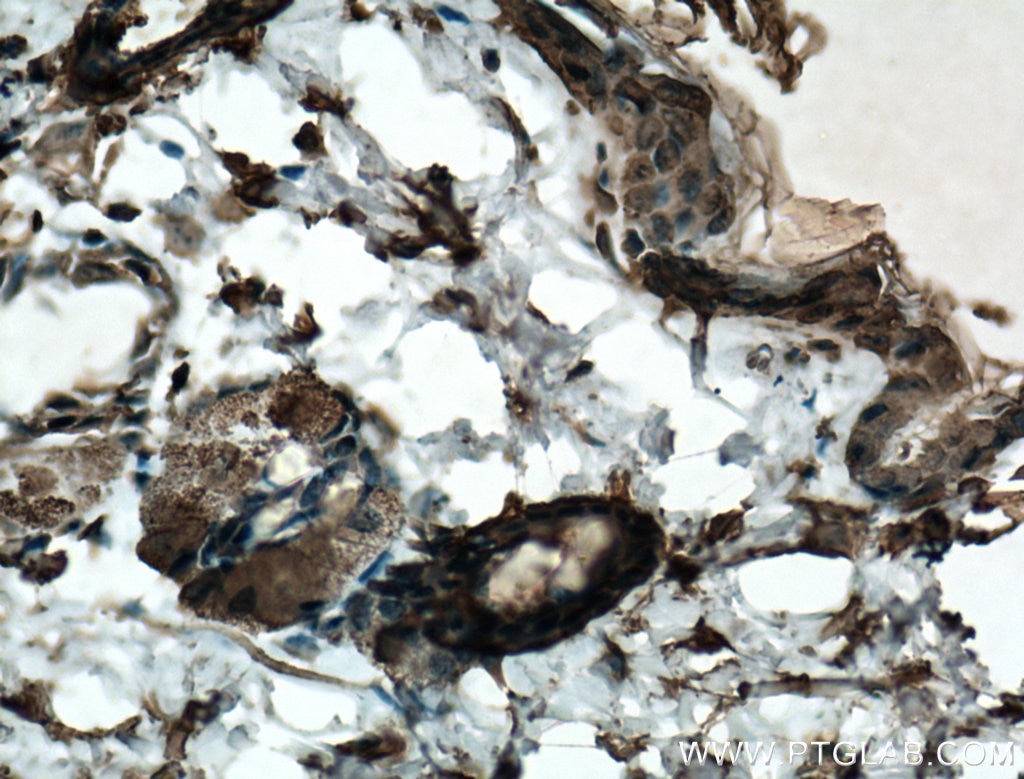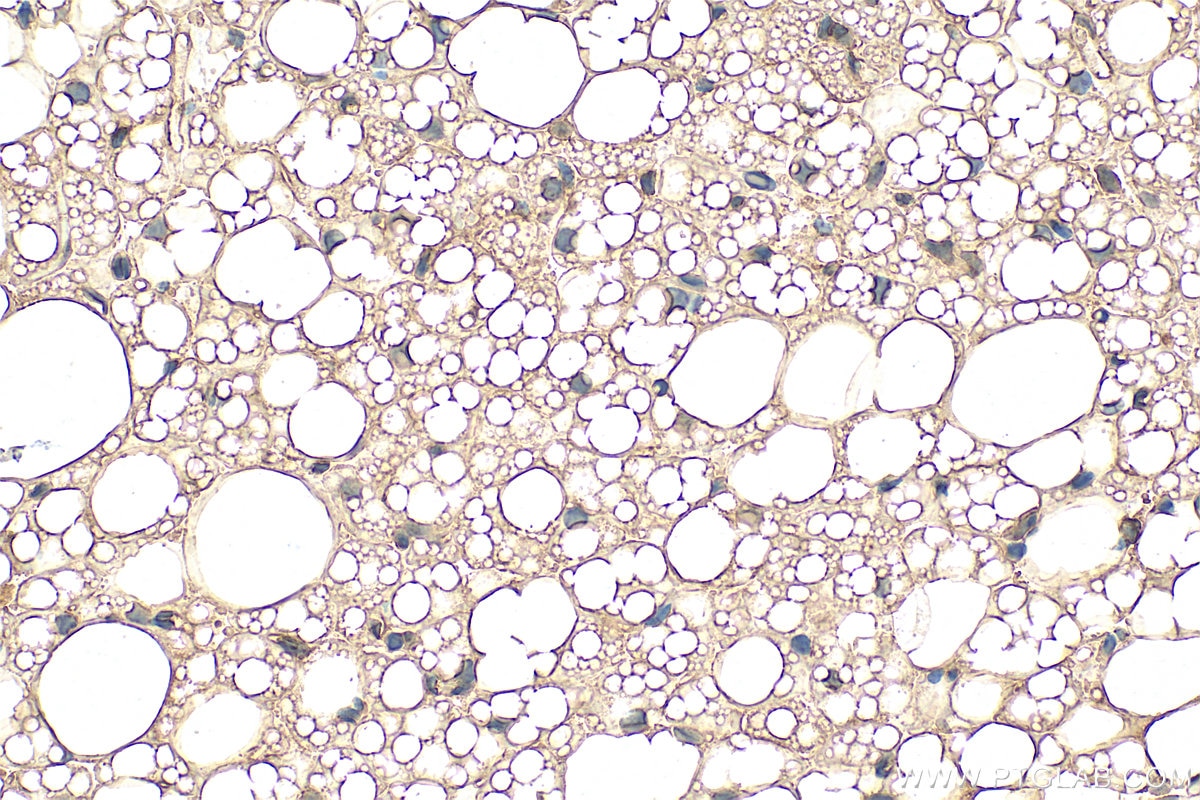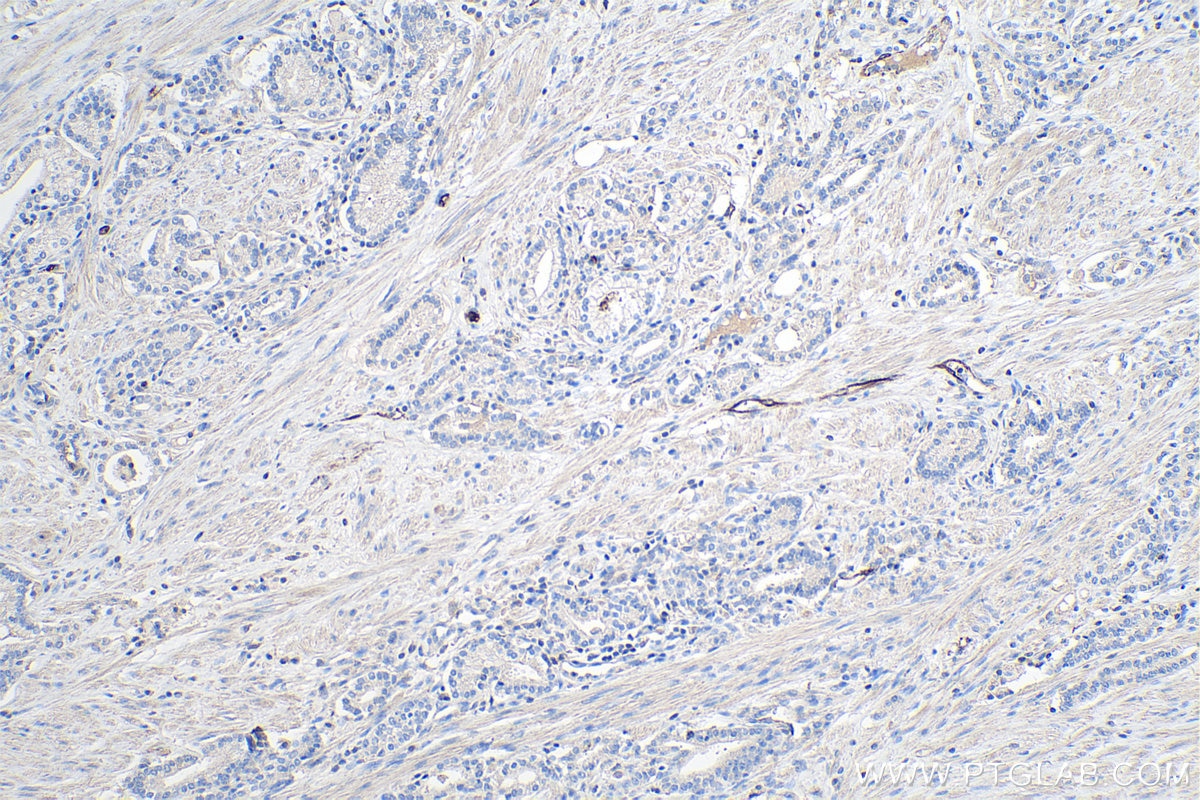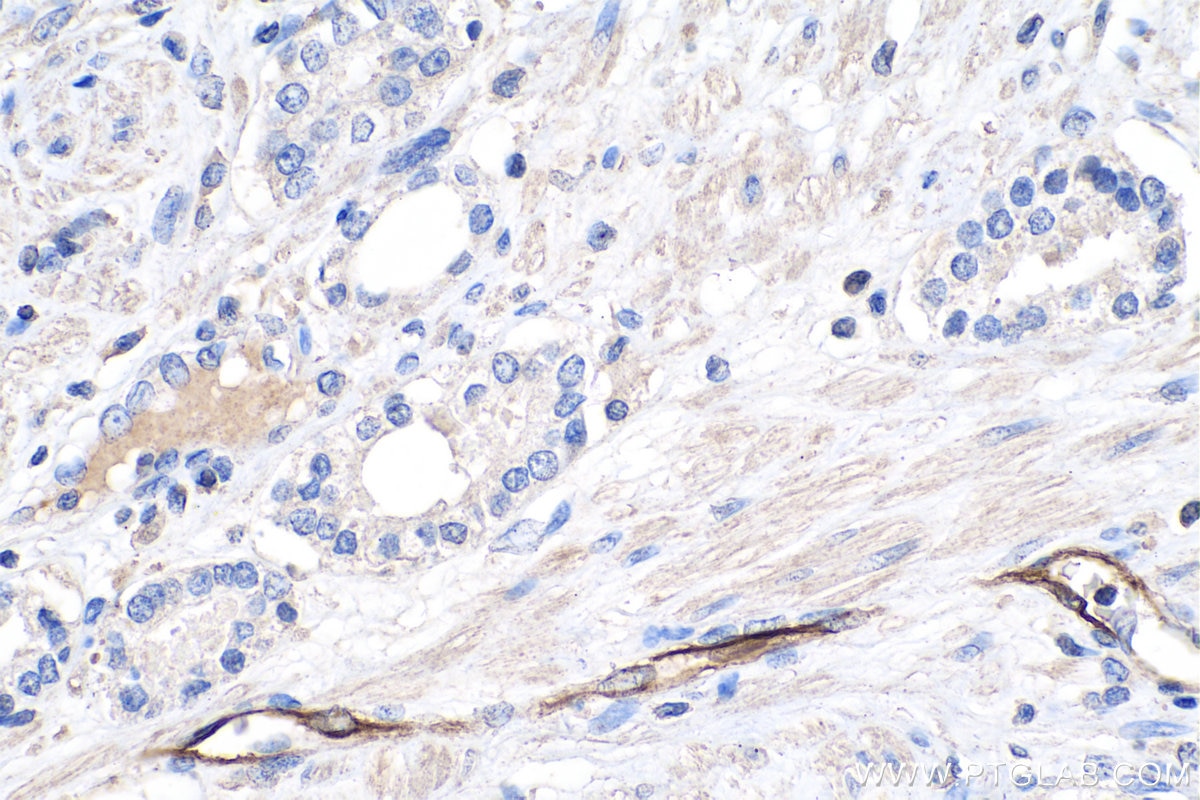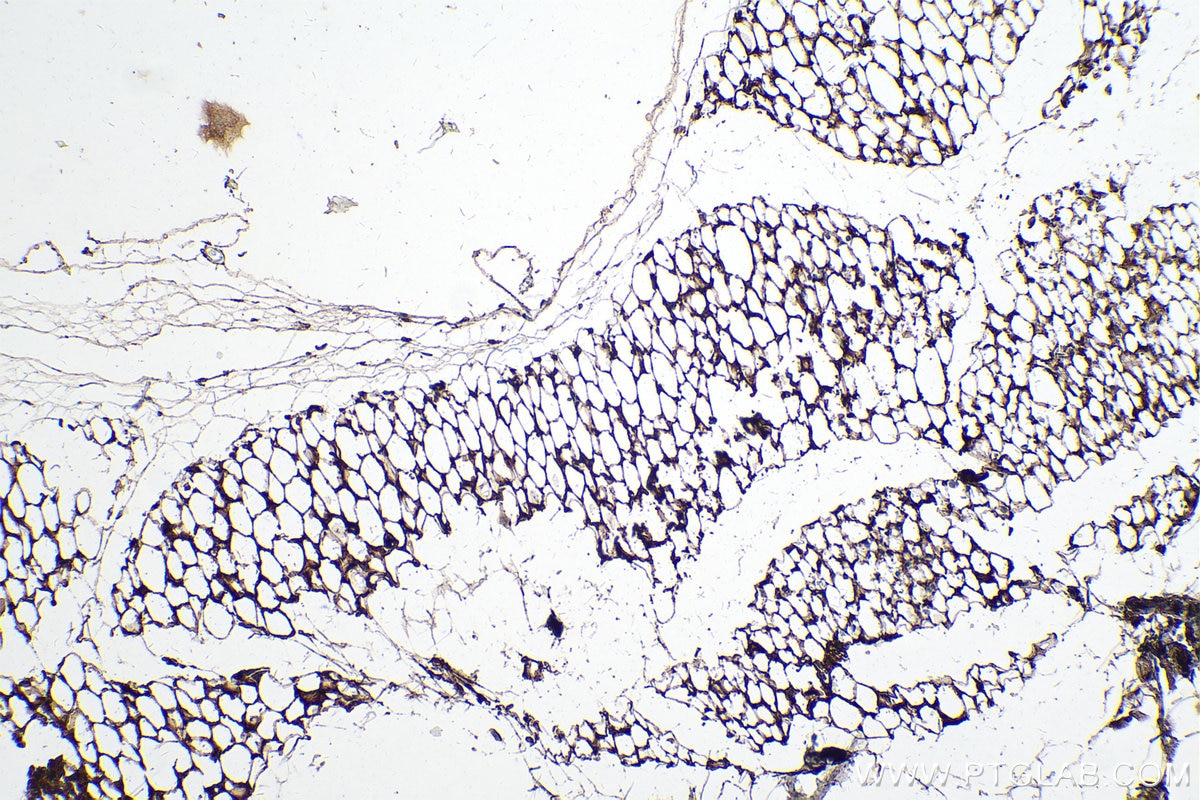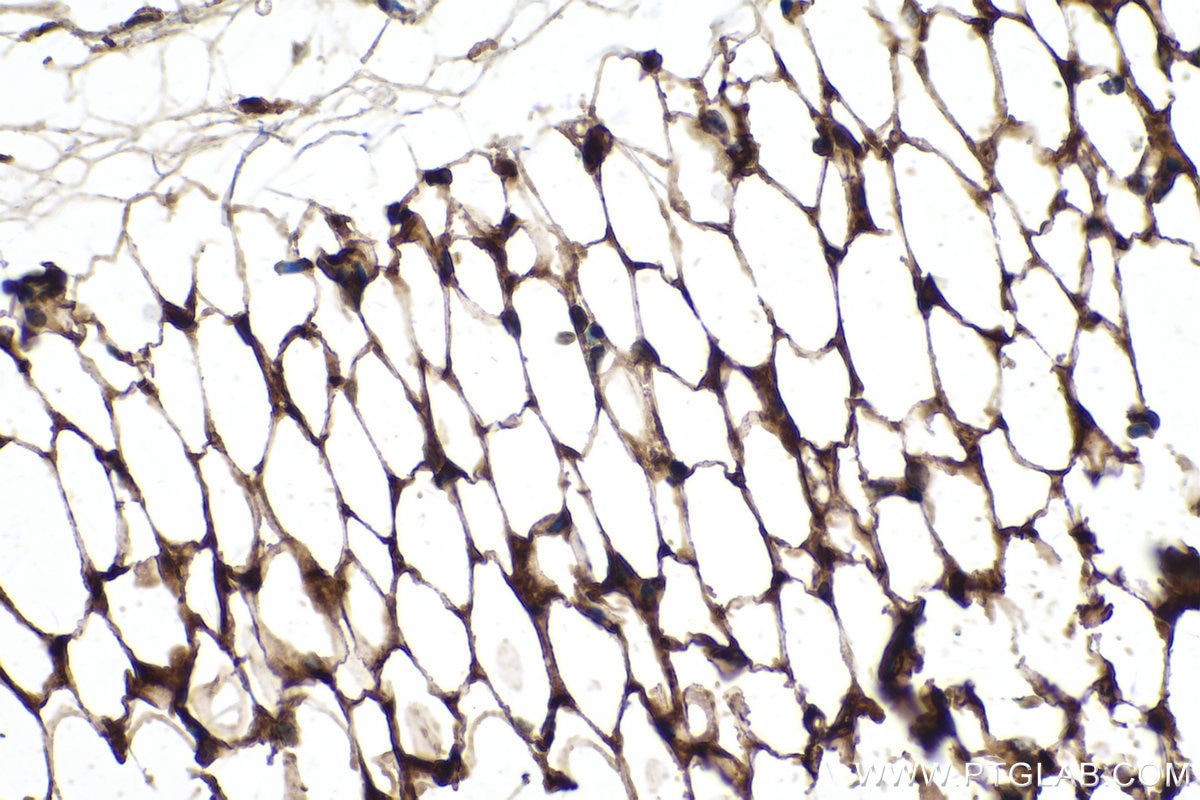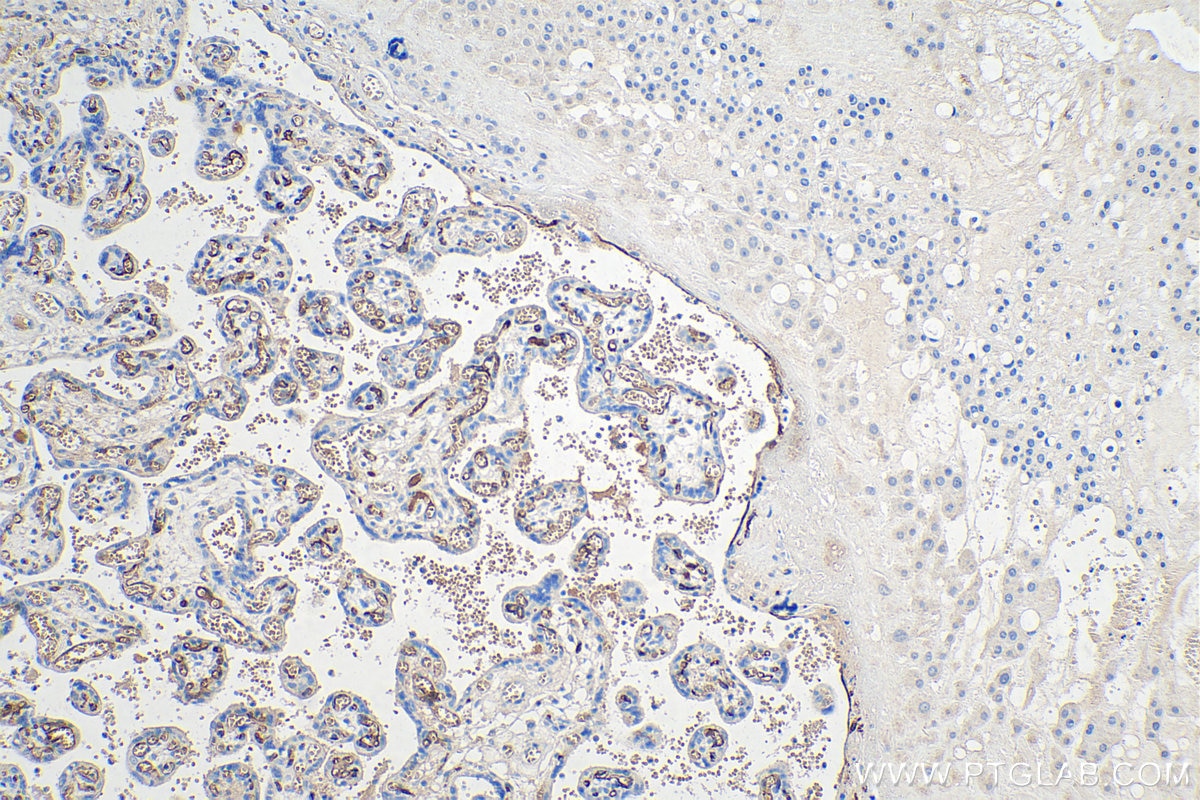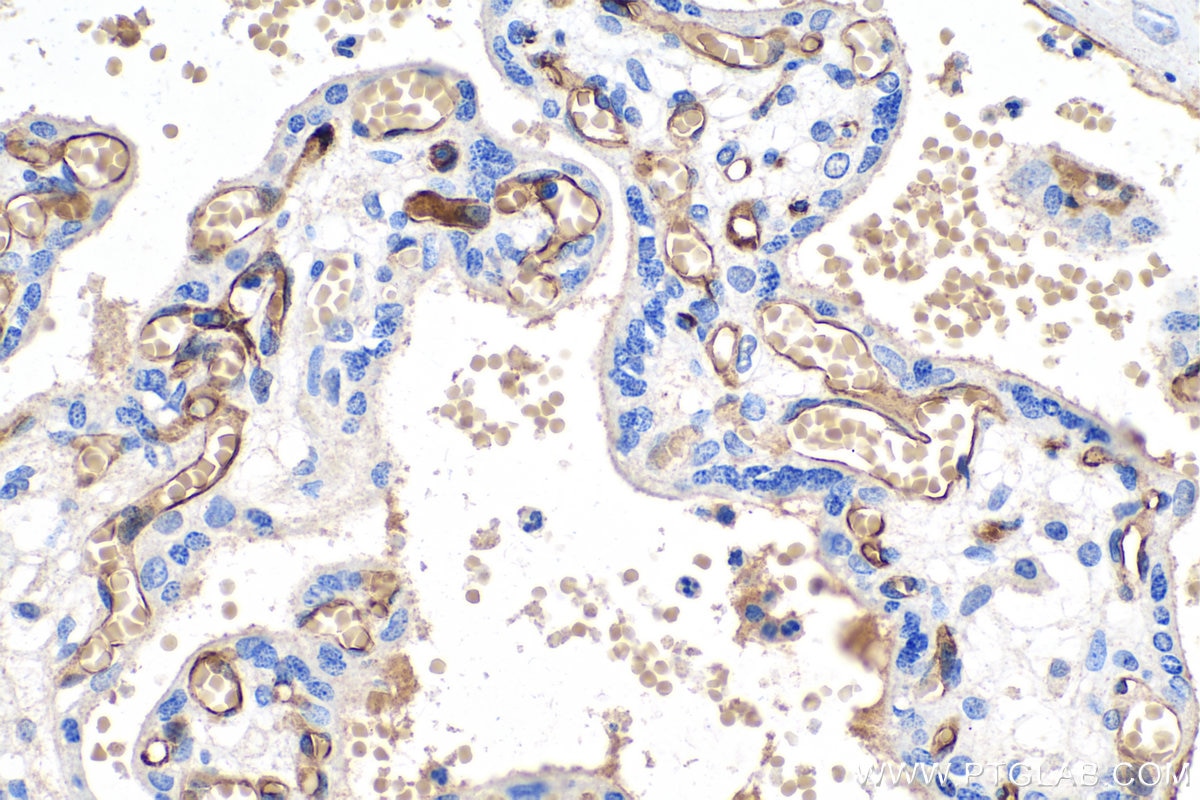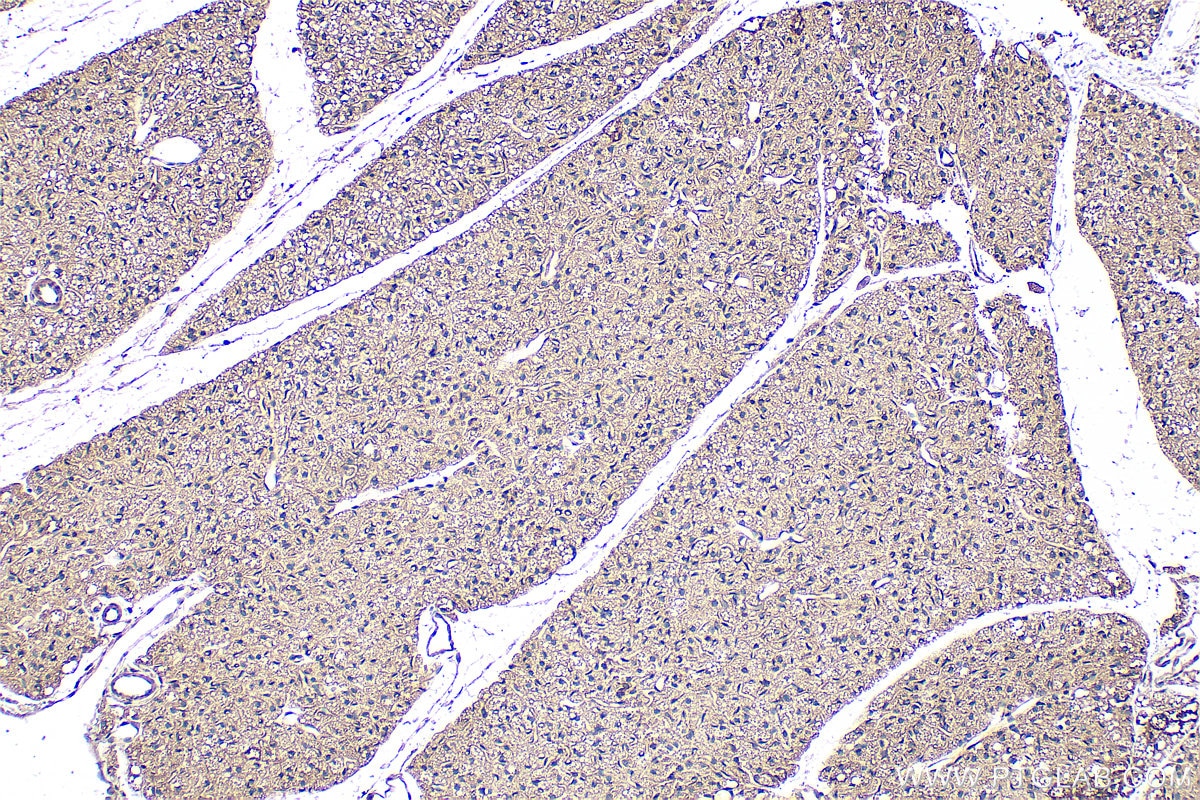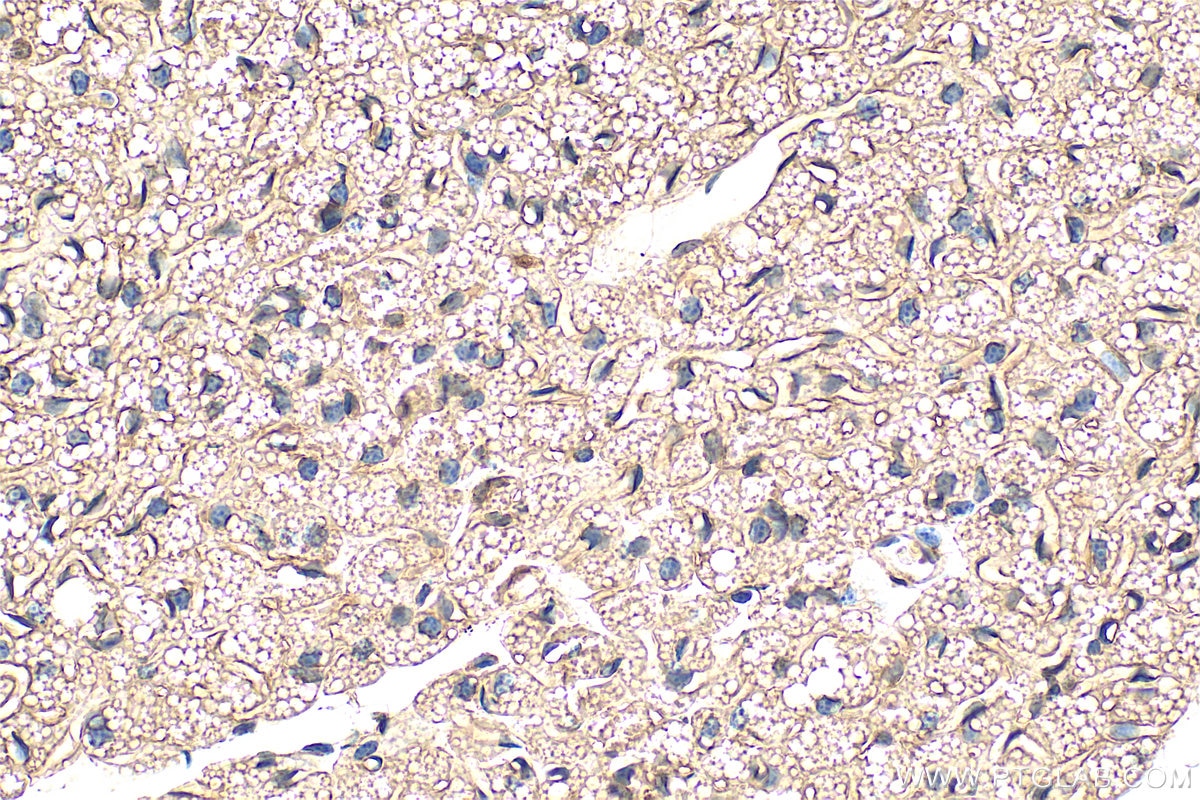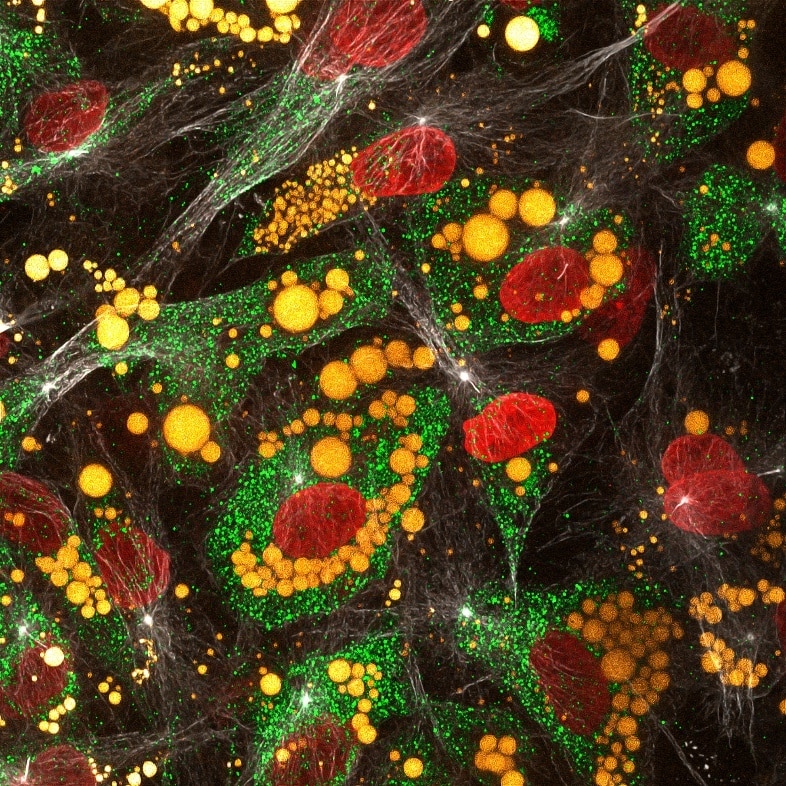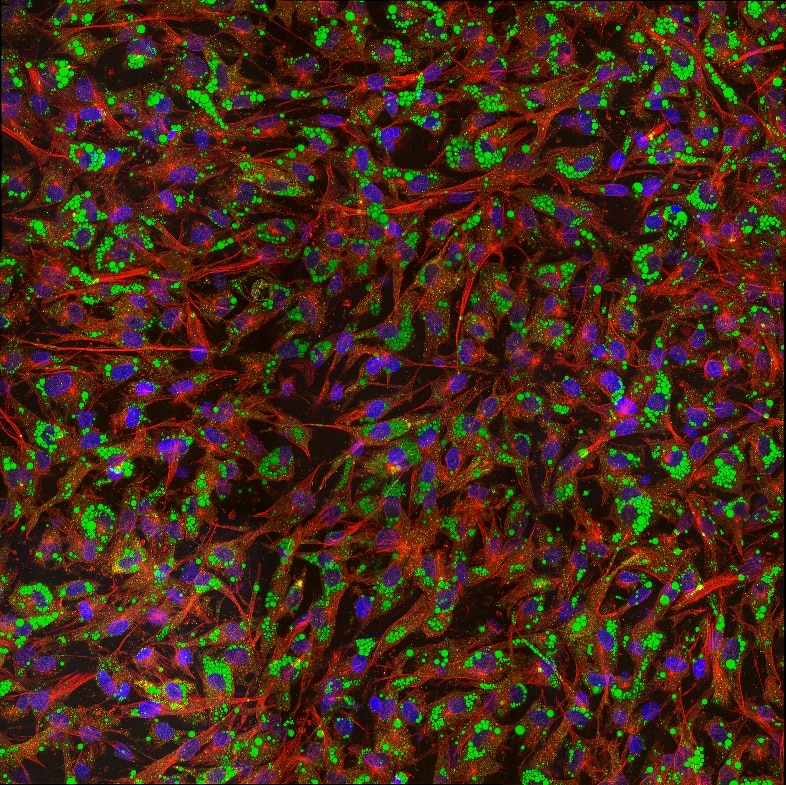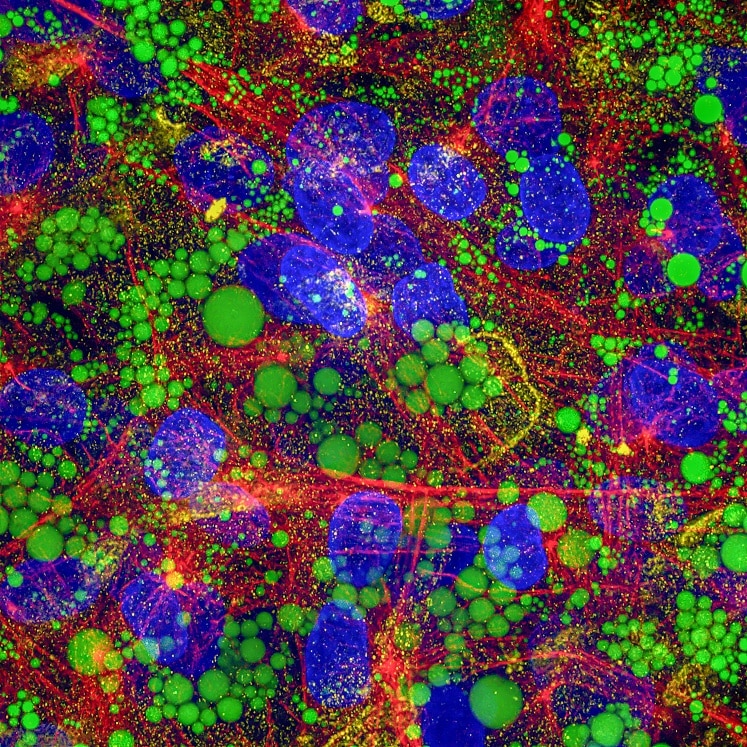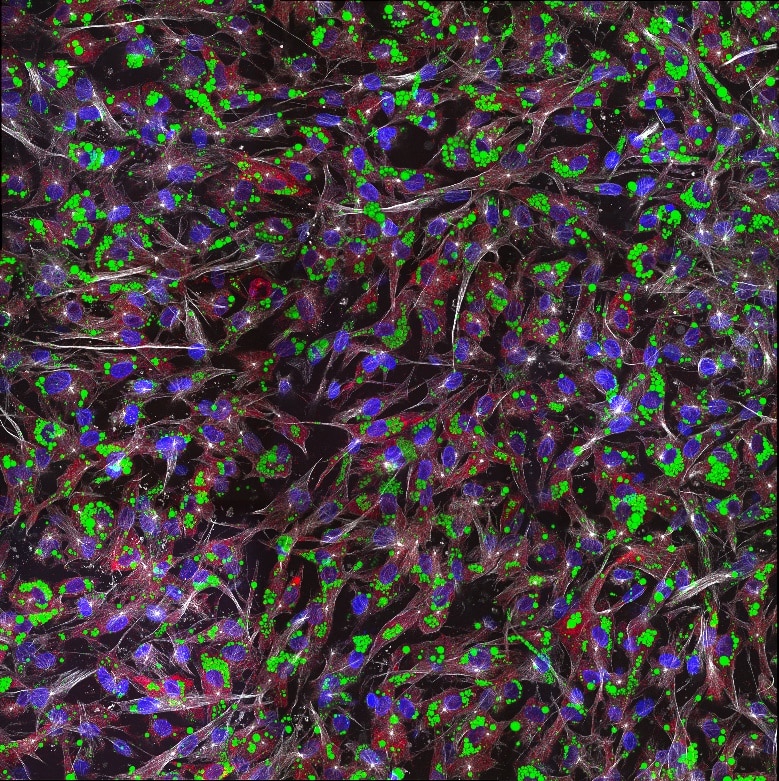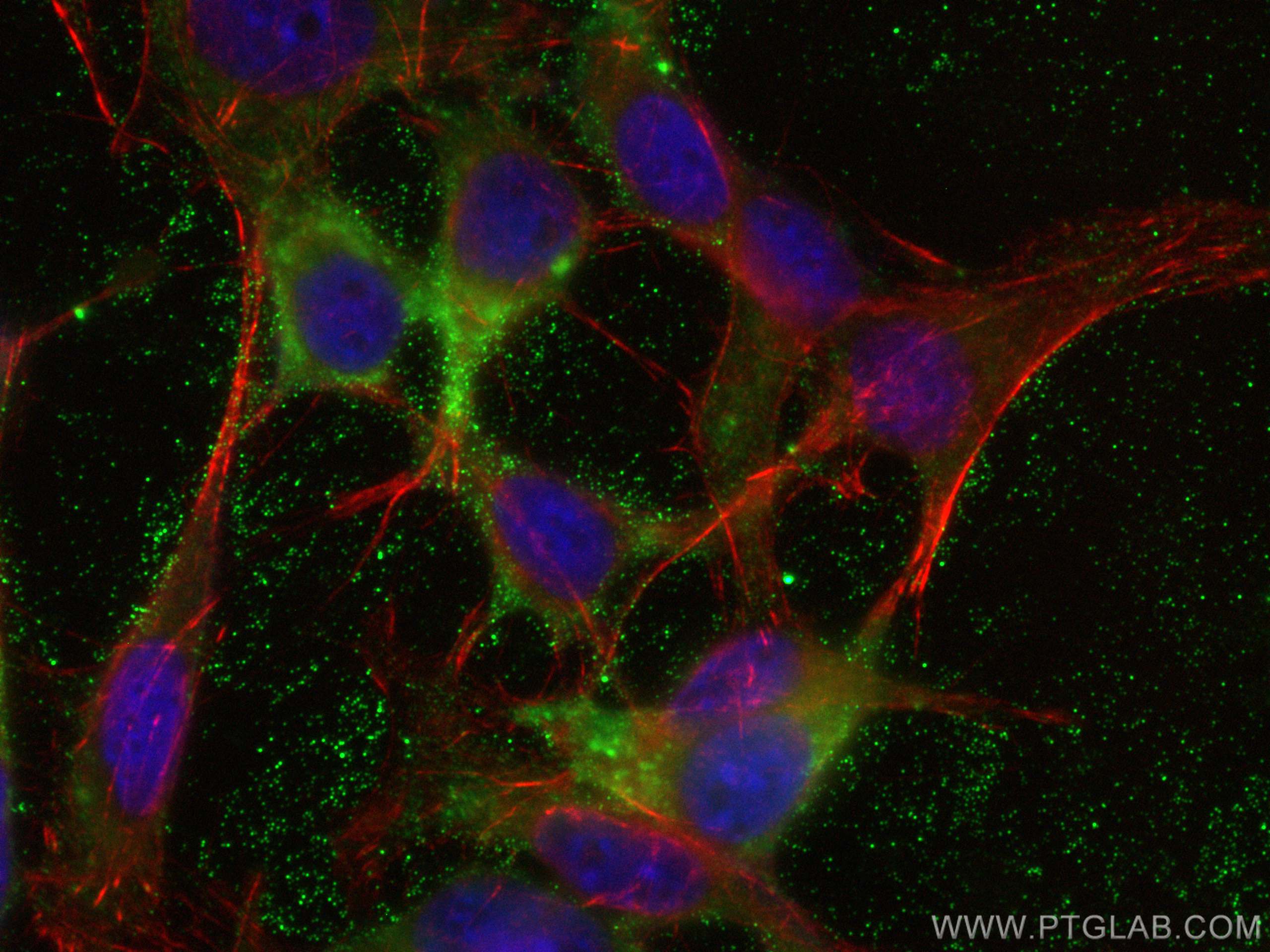Adiponectin Monoklonaler Antikörper
Adiponectin Monoklonal Antikörper für WB, IHC, IF/ICC, ELISA
Wirt / Isotyp
Maus / IgG1
Getestete Reaktivität
human, Maus, Ratte und mehr (1)
Anwendung
WB, IHC, IF/ICC, ELISA
Konjugation
Unkonjugiert
CloneNo.
5D8A7
Kat-Nr. : 66239-1-Ig
Synonyme
Geprüfte Anwendungen
| Erfolgreiche Detektion in WB | humanes Fettgewebe |
| Erfolgreiche Detektion in IHC | rat brown adipose tissue, humanes Plazenta-Gewebe, humanes Prostatakarzinomgewebe, braunes Mausfettgewebe, Maus-Skelettmuskelgewebe, Maushautgewebe Hinweis: Antigendemaskierung mit TE-Puffer pH 9,0 empfohlen. (*) Wahlweise kann die Antigendemaskierung auch mit Citratpuffer pH 6,0 erfolgen. |
| Erfolgreiche Detektion in IF/ICC | 3T3-L1-Zellen, human adipose-derived mesenchymal stem cells |
Empfohlene Verdünnung
| Anwendung | Verdünnung |
|---|---|
| Western Blot (WB) | WB : 1:500-1:2000 |
| Immunhistochemie (IHC) | IHC : 1:200-1:800 |
| Immunfluoreszenz (IF)/ICC | IF/ICC : 1:200-1:800 |
| It is recommended that this reagent should be titrated in each testing system to obtain optimal results. | |
| Sample-dependent, check data in validation data gallery | |
Veröffentlichte Anwendungen
| WB | See 8 publications below |
| IF | See 2 publications below |
Produktinformation
66239-1-Ig bindet in WB, IHC, IF/ICC, ELISA Adiponectin und zeigt Reaktivität mit human, Maus, Ratten
| Getestete Reaktivität | human, Maus, Ratte |
| In Publikationen genannte Reaktivität | human, Hausschwein, Maus |
| Wirt / Isotyp | Maus / IgG1 |
| Klonalität | Monoklonal |
| Typ | Antikörper |
| Immunogen | Adiponectin fusion protein Ag17383 |
| Vollständiger Name | adiponectin, C1Q and collagen domain containing |
| Berechnetes Molekulargewicht | 244 aa, 26 kDa |
| Beobachtetes Molekulargewicht | 29 kDa |
| GenBank-Zugangsnummer | BC096308 |
| Gene symbol | Adiponectin |
| Gene ID (NCBI) | 9370 |
| Konjugation | Unkonjugiert |
| Form | Liquid |
| Reinigungsmethode | Protein-G-Reinigung |
| Lagerungspuffer | PBS with 0.02% sodium azide and 50% glycerol |
| Lagerungsbedingungen | Bei -20°C lagern. Nach dem Versand ein Jahr lang stabil Aliquotieren ist bei -20oC Lagerung nicht notwendig. 20ul Größen enthalten 0,1% BSA. |
Hintergrundinformationen
Adiponectin (AdipoQ), an adipocyte-derived hormone, is one of the most abundant adipokines in the blood circulation. Adiponectin modulates a number of metabolic processes, including improving INS sensitivity and anti-inflammatory activity. The role of AdipoQ in reproduction is not yet fully understood, but the expression of AdipoQ in reproductive tissues has been observed in various animals and humans, including chicken testis, bovine ovary, and human placenta. Adiponectin exerts its effects by activating a range of different signaling molecules via binding to two transmembrane AdipoQ receptors, AdipoR1 and AdipoR2. AdipoR1 is expressed primarily in the skeletal muscle, whereas AdipoR2 is predominantly expressed in the liver. AdipoQ May play a role in cell growth, angiogenesis and tissue remodeling by binding and sequestering various growth factors.
Protokolle
| PRODUKTSPEZIFISCHE PROTOKOLLE | |
|---|---|
| WB protocol for Adiponectin antibody 66239-1-Ig | Protokoll herunterladen |
| IHC protocol for Adiponectin antibody 66239-1-Ig | Protokoll herunterladenl |
| IF protocol for Adiponectin antibody 66239-1-Ig | Protokoll herunterladen |
| STANDARD-PROTOKOLLE | |
|---|---|
| Klicken Sie hier, um unsere Standardprotokolle anzuzeigen |
Publikationen
| Species | Application | Title |
|---|---|---|
J Cell Physiol Rapid responses of adipocytes to iron overload increase serum TG level by decreasing adiponectin. | ||
Food Funct Quercetin regulates skeletal muscle fiber type switching via adiponectin signaling. | ||
Anim Biotechnol Leucine regulates porcine muscle fiber type transformation via adiponectin signaling pathway. | ||
Anim Biotechnol Effect of dietary leucine supplementation on skeletal muscle fiber type transformation in weaning piglets | ||
Signal Transduct Target Ther Annexin A1 binds PDZ and LIM domain 7 to inhibit adipogenesis and prevent obesity | ||
Sci Rep Polypeptide N-acetylgalactosaminyltransferase-15 regulates adipogenesis in human SGBS cells |
